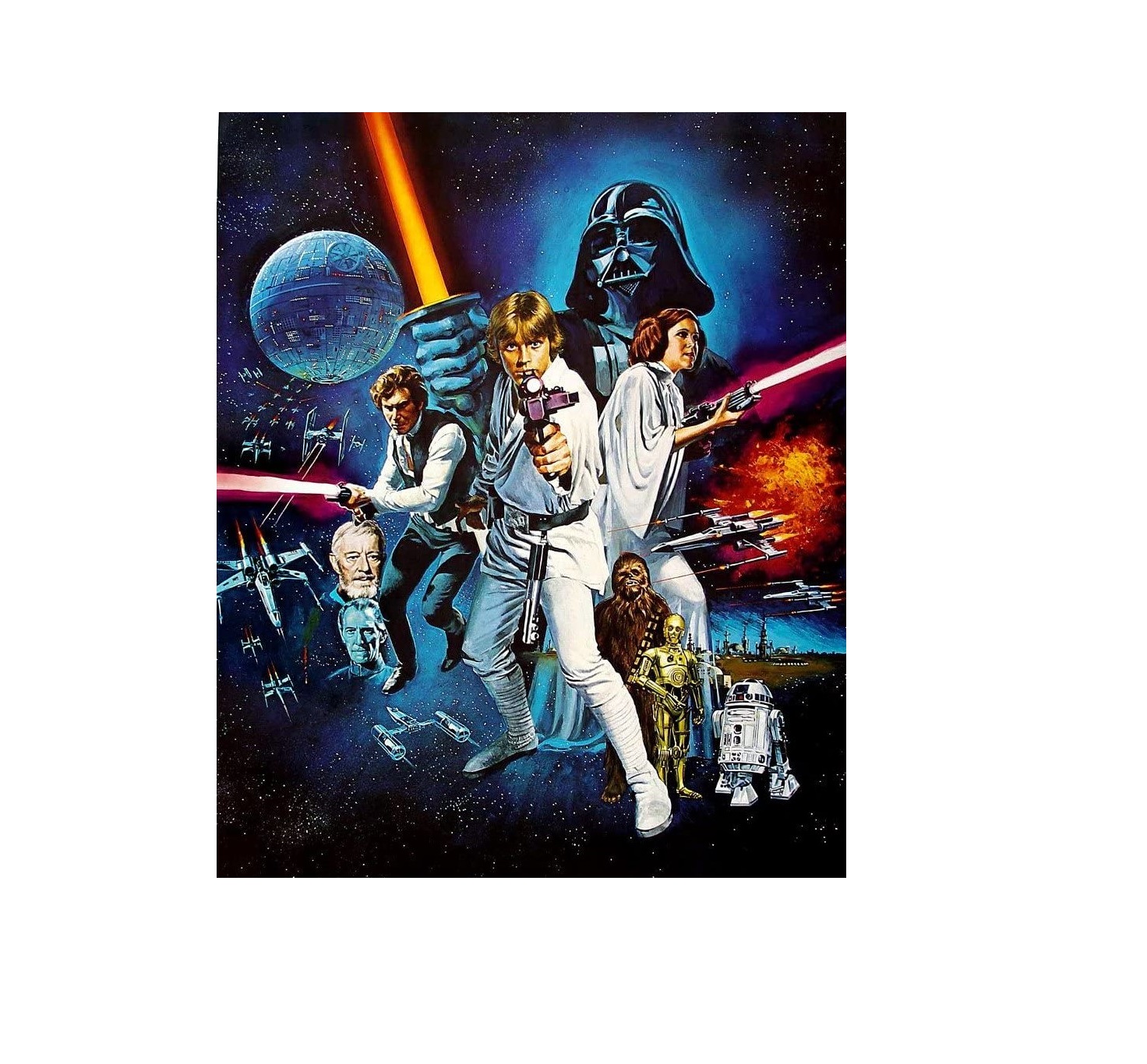HISTORY'S Moments in Media: May the Force Be With You

A long time ago in a galaxy far, far away — or, to be more accurate, 43 years ago this month at Grauman’s (formerly Mann’s) Chinese Theatre in Hollywood — the original Star Wars movie premiered, launching a franchise that would change how movies are made, marketed and merchandised, and would still be going strong nearly a half-century later.
When Star Wars opened Memorial Day weekend on May 25, 1977, no one really expected it to be a hit. Made for only $11 million (about $47 million in 2020 dollars, which is less than a fifth of the production budget for 2019’s The Rise of Skywalker), even writer and director George Lucas viewed it as only a niche sci-fi film.
An outer-space opera that combined elements of samurai movies, mythology, Eastern philosophy and cheesy mid-20th century space adventures like Flash Gordon, Star Wars wasn’t even considered by its studio, 20th Century Fox, as its big summer movie that year. That was supposed to be The Other Side of Midnight, a romance thriller based on a Sidney Sheldon novel. On that opening weekend, Star Wars played on only 42 screens. Even so, after that premiere at Grauman’s, droids R2-D2 and C-3PO left their prints in the sidewalk outside.
But something clicked. Fans started coming. The lines in front of theaters went down the block. By the time Memorial Day weekend was over, Star Wars had earned $1.5 million at the box office, a huge number back then. Right after the premiere, Lucas left for a what was supposed to be a quiet trip to Hawaii. Instead, as Lucas recalled, 20th Century Fox chief Alan Ladd Jr. phoned to tell him to turn on the news: Walter Cronkite was reporting on the Star Wars phenomenon. That’s when the director knew he had a hit.
Lucas’ movie created new ways of filming, new kinds of special effects, new sound design techniques and even a whole new way of telling a science fiction story. By the end of the summer, Star Wars had earned $100 million. It would go on to win six Academy Awards®, including Best Original Score, in addition to special Oscars® for sound editing and developments in motion picture technology. It would ultimately earn about $460 million in the United States and close to $800 million worldwide.
It also created its own empire.
First came the original two sequels — 1980’s The Empire Strikes Back and 1983’s Return of the Jedi — and the unprecedented merchandising blitz that accompanied those films. The original trilogy was then rereleased in 1997; the prequel trilogy — The Phantom Menace, Attack of the Clones and Revenge of the Sith — began in 1999. Over the years, there have been a total of a dozen feature films, more than a half-dozen TV series and countless TV specials, all of which were accompanied by their own merchandise.
Lucas’ technical innovations also developed into companies that are major Hollywood players: sound company THX, visual effects company Industrial Light & Magic and animation powerhouse Pixar.
But perhaps the greatest tribute to the success of the Star Wars empire came in 2012, when the Walt Disney Company announced it would purchase Lucas’ company, Lucasfilm, for $4 billion in stock. At the time, Disney CEO Bob Iger said that he had spent a year and a half working to close the deal for control of the Star Wars franchise. Iger said that “[t]his is one of the great entertainment properties of all time…it’s just fantastic for us to have the opportunity to both buy it, run it and grow it.”
And grow it they did. By the sixth anniversary of the deal, the new Star Wars features released by Disney had grossed $4.8 billion at the box office, recouping Disney’s entire investment.
Click the social buttons to share this story with colleagues and friends.
The opinions expressed here are the author's views and do not necessarily represent the views of MediaVillage.com/MyersBizNet.

